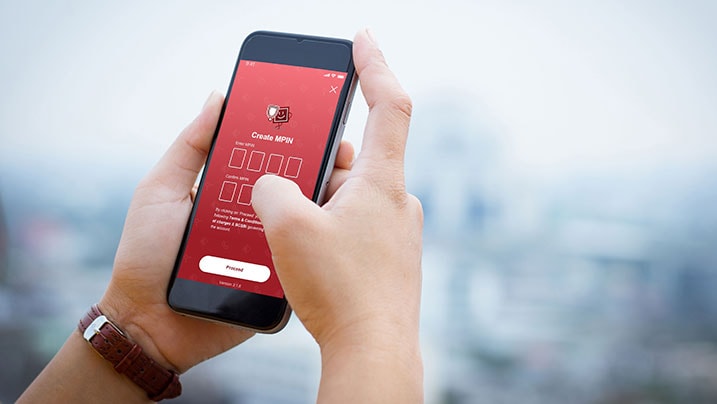MPIN or Mobile Banking Personal Identification Number is a four- or six-digit passcode required every time while making a transaction through mobile banking apps. This is a customer authentication number, which is essential to secure their banking details before every transaction.According to the National Payments Corporation of India (NPCI), the number of banks live on UPI is 358 and over Rs.11 Crore transactions have already been made through the Unified Payments Interface (UPI) in September 2022. The upward trend in the growth of digital payment in India has significantly increased the rate of cyber-crime significantly. To ensure safe and secure mobile banking transactions MPIN has been introduced to avoid online fraud. Here is all you need to know about MPIN in UPI.

What Is An MPIN Number?
MPIN stands for Mobile Personal Identification Number and is a 4 or 6-digit passcode used to authenticate transactions and verify identity on mobile banking and payment apps. It plays a key role in securing mobile banking activities such as logging into your account, making payments, and transferring funds.
Now, let us take an example of an MPIN number. To create and manage an MPIN, register with a bank or financial institution that offers digital banking services like a mobile money identifier. You will be asked to set up a personalised PIN during registration. This PIN acts as your MPIN.
The MPIN facilitates various banking services such as fund transfers, bill payments, and mobile wallet transactions. Whenever you initiate a transaction through your mobile device, you will be prompted to enter your MPIN to authenticate and authorise the transaction.
Significance of MPIN in UPI
- Essential Security: The MPIN protects your digital wallet, ensuring safe UPI transactions.
- User-Friendly: It’s simple to use while maintaining transaction security.
- Key for Digital Transactions: The MPIN allows you to perform various digital activities, such as transferring funds or making online purchases.
- Efficient Financial Management: It streamlines money management, making transactions both secure and effortless.
- Safeguards Your Digital Assets: With your MPIN, your digital funds remain secure, letting you use UPI confidently
MPIN Number Example
An example of an MPIN could be a 4-digit code like 8373 or a 6-digit code like 192304.
Example Scenario: Using MPIN for Fund Transfer
Imagine a user named Raj who wants to transfer money to a friend using his bank’s mobile app. Here’s how he uses his MPIN in the process:
- Open the App: Raj launches his mobile banking app on his smartphone, entering his MPIN (e.g., 192304) to access his account.
- Select Transfer Option: After logging in, he navigates to the ‘Fund Transfer’ section and enters his friend’s bank account details and the amount to be sent.
- Enter MPIN Again: Before completing the transaction, the app prompts Raj to enter his MPIN once more for authentication. He inputs his MPIN, 192304.
- Transaction Completed: Upon successful entry of the MPIN, the transaction is authorised, and the funds are swiftly transferred to his friend’s account.
Difference Between ATM PIN, UPI PIN and MPIN
Details | ATM PIN | UPI PIN | MPIN |
Purpose | Debit card authentication during POS transaction or while withdrawing cash from ATMs | Transaction authentication in UPI apps | Authentication of mobile banking apps like NEFT, IMPS, etc. |
Length of passcode | 4-digits | 4-digits | 4 or 6 digits |
Setting PIN | By following the instruction provided by the bank | Via UPI apps | Via bank’s app |
Reset PIN | Use net banking or visit nearest bank ATM | Through UPI app only | Through ATM machine, banking app or visit nearest bank branch |
Use | Cash withdrawalCheck balance | Check account balance via UPI appsOnline and offline transaction | Transact via mobile banking servicesOr, through banking apps |
FAQs
How to Generate MPIN?
- STEP 1: Open your bank’s app and locate the “Generate MPIN” option.
- STEP 2: Enter the last six digits of your debit card number and its expiry date.
- STEP 3: Check your registered mobile phone for an OTP and enter it to confirm.
- STEP 4: Choose your desired MPIN and tap “Submit.”
How to Change MPIN?
Step 1: Launch the mobile banking app on your phone.
Step 2: Log in by entering your MPIN or login credentials.
Step 3: Search the app for the ‘More’ option or go to the ‘Settings’ section.
Step 4: Under the ‘Settings’ section, choose the option to modify your MPIN.
Step 5: Enter both your existing MPIN and the new MPIN you want to set.
Step 6: Verify the accuracy of the MPIN entry by confirming it.
Step 7: You will receive an OTP on your registered mobile number.
Step 8: Validate the updated MPIN by entering the OTP within the allotted time.
